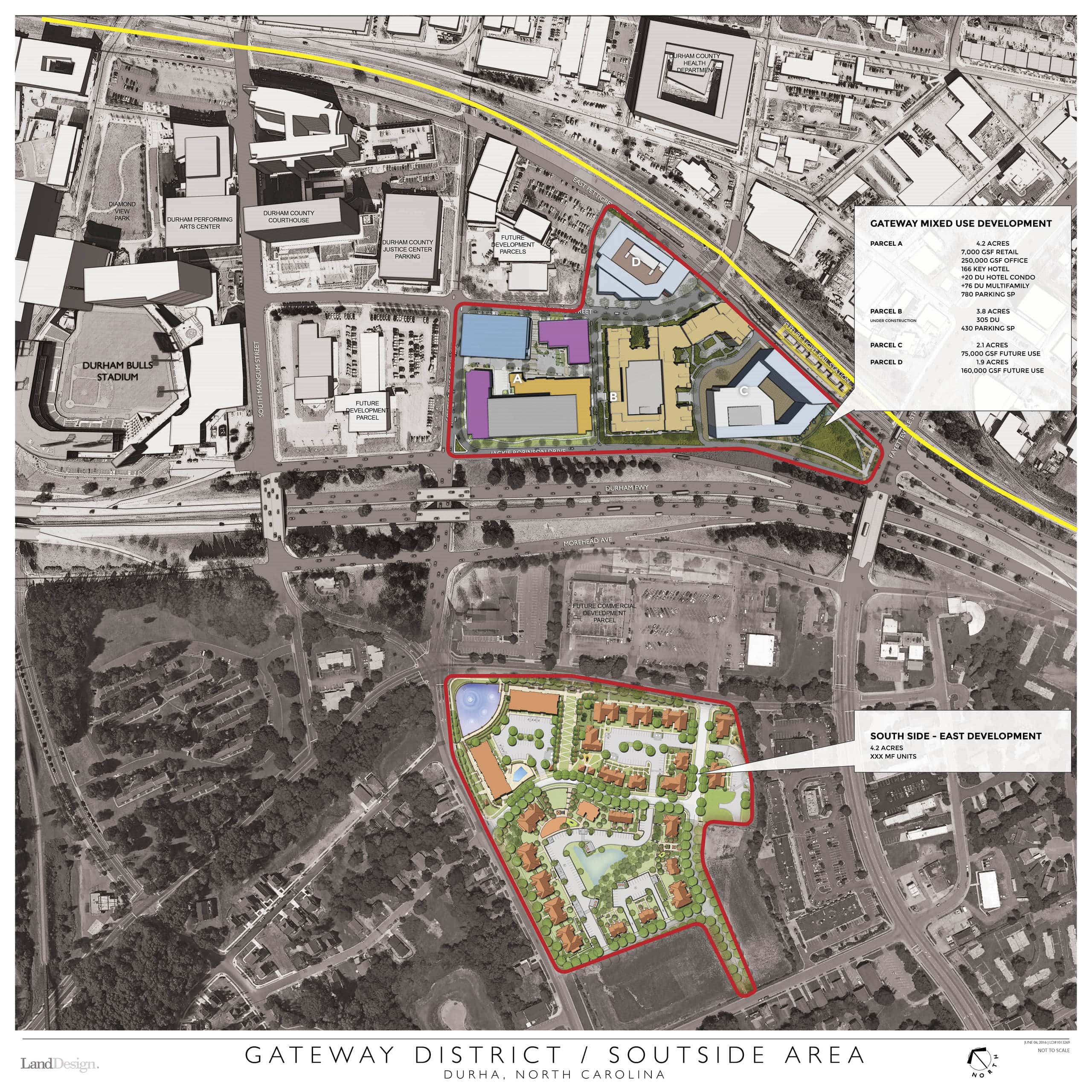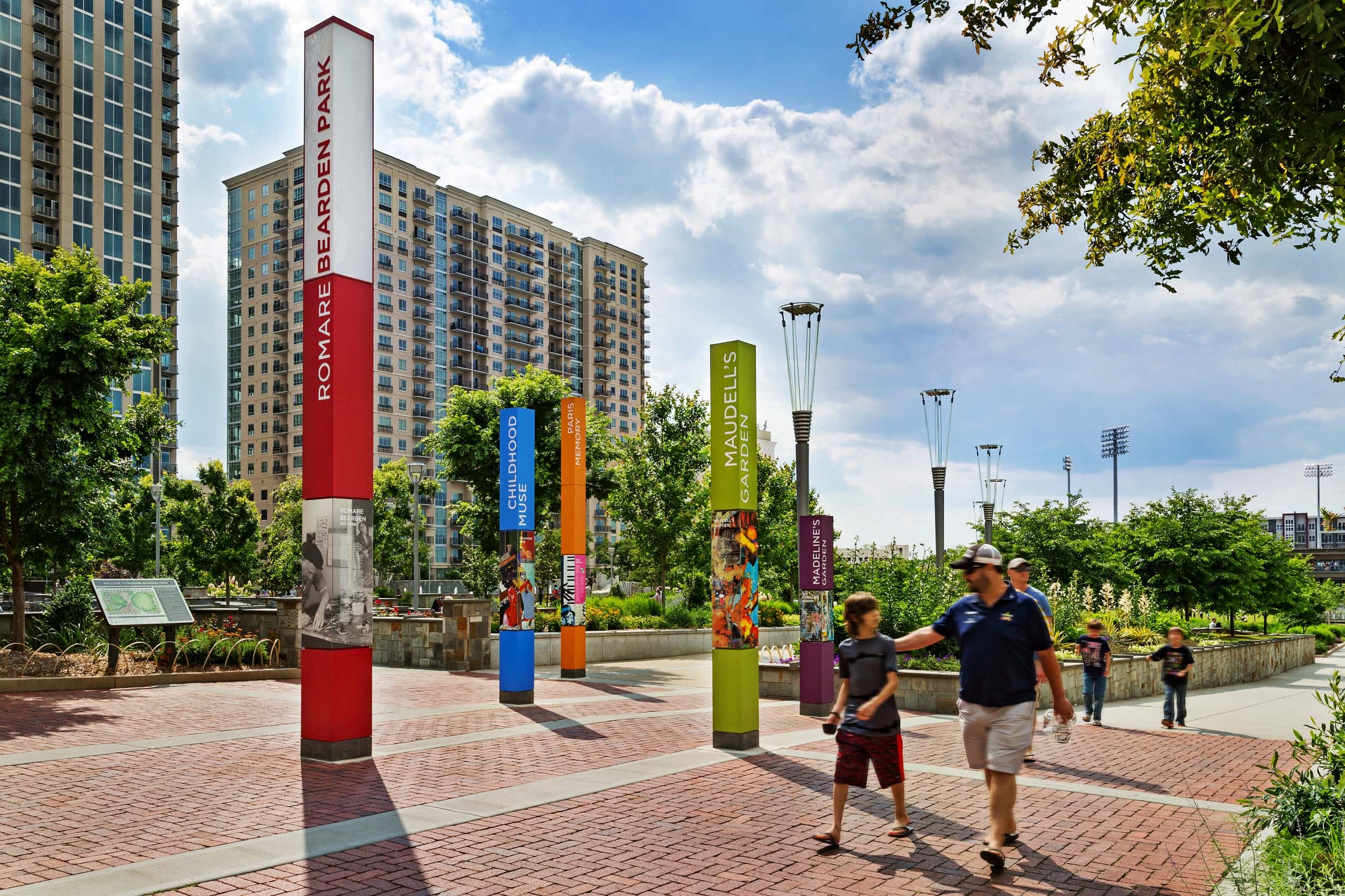North Carolina has been ranked the number one growth state according to the U-Haul Migration Trends Report with the Raleigh/Durham area consistently showing high-growth numbers. They have found themselves as number nine on Forbe’s America’s Fastest Growing Cities 2016 with a 2015 growth rate of 1.27% and a projected 0.93% for 2016. Raleigh has led the Southeast as an ascendant tech hot-spot which comes as no surprise with the Research Triangle Park making up the center of the Raleigh-Durham region. As Learn NC states, this innovative, research Park has spurred economic growth with over 37,000 jobs and an average salary of $56,000 annually which is 45% larger than the national average. Not only are the job opportunities and educational institutions a driving factor for growth, but North Carolina’s climate and overall quality of life lure future residents to the area. However, with growth comes the need for plans to strategically prepare for the future of the City.
Durham is one of the cities that understands the importance in providing a path for growth that mitigates sprawl, supports infrastructure and sustains the quality of life. The City has been proactive in making plans and positioning themselves for alternative transportation such as transit. They are already seeing successful revitalization projects that are bringing the livelihood back to the community.
A specific area that is seeing exceptional revitalization is Durham’s Government District. An area where a development now known as Gateway Center is oriented to the existing vitality, and which adjoins the future Dillard Street transit stop on land once owned by Hendricks Automotive. Although there are a handful of public service centers such as the corrections department, county court, city solid waste services, and housing authority; there are a number of contributing energy curators that are located in the District. The American Tobacco campus is one of the main job generators in Durham, while the Durham Performing Arts Center (DPAC) and the Durham Bulls baseball stadium provide night life and help employ a sense of culture. Surrounding these city assets are huge underutilized, post-industrial landscapes that yield a great opportunity for redevelopment and the infusion of vitality to the Government District.
As visionaries and master planners, we recognized the long-term value and prominence of this property and began looking at the broader context with Citisculpt in 2013. A primary objective is bridging the divide created by Hwy 147 to the communities to the south. Fayetteville Street and the distinction of this site from the freeway provide for a true ‘gateway’ moment to the City and the emerging district. We have guided the master planning effort for the +/- 15 acres into a unique urban center that brings the community together. The initial 300+-unit multifamily residences are set to be occupied in 2017. The full build-out of the Gateway Center will have 200,000 SF of class A office, 145 key hotel with 20 condos, a companion hotel, ground floor retail and restaurants, and another 76-unit multifamily residences. To deliver this vertically integrated solution, the development team has formed many partnerships from both the private and public side of the table. One of the parking structures for Gateway Center is intended to be in partnership with the City. The development team has also aligned with GoTriangle to provide future Right-of-Way for the transit system within Pettigrew Street, as well as future provisions for transit parking for the Dillard Street Station. Discussions are underway with NCDOT and the City with regard to a potential land swap and implementation of a bold new district park at the intersection of Fayetteville Street and Pettigrew Street, and the on-going negotiations with NCDOT regarding the much needed street connectivity to Jackie Robinson Boulevard, which is a controlled access street.
The complexity of the development deal, and the public infrastructure creates a unique permitting process. LandDesign has orchestrated several Special Use Permits and Variances to accomplish the design objectives of the development in real-time with the project site permitting. With a tight delivery to market and a dynamic new vision for one of Durham’s primary gateways, LandDesign’s expertise has built an implementable strategy for Gateway Center, as well as created value for the adjoining underutilized parcels that, once developed, will create one of the most exciting urban environments in Durham.
To learn more about the growth of development in Durham, visit Business View’s article.


